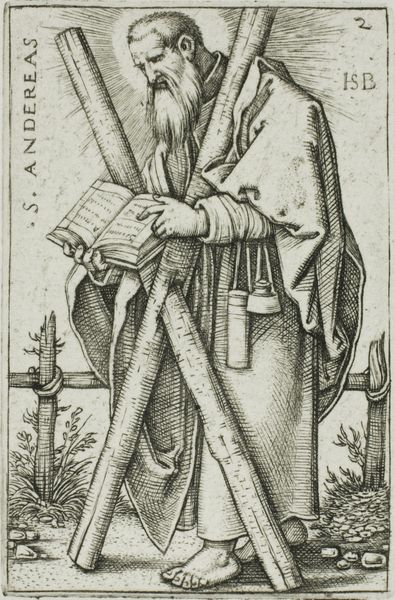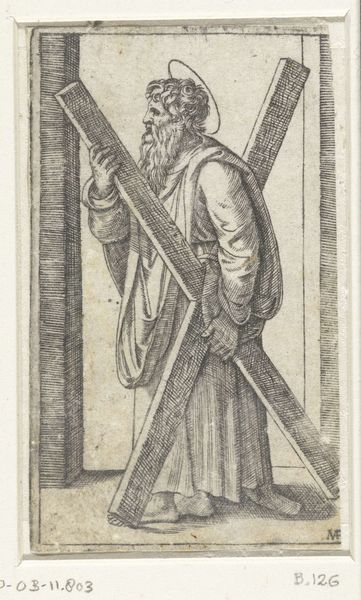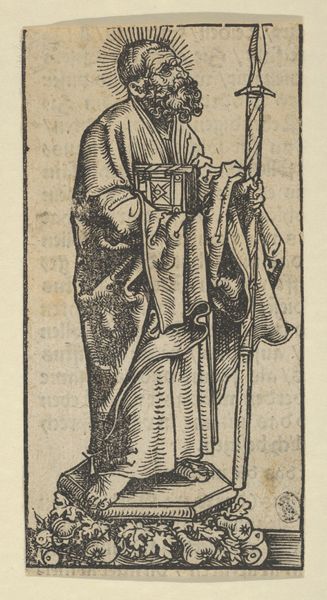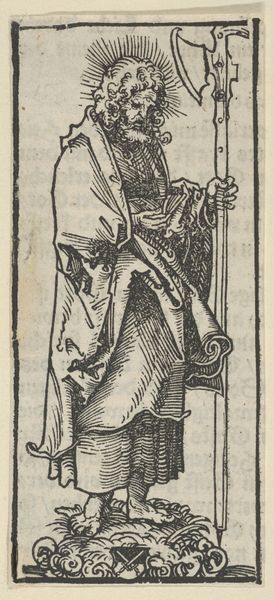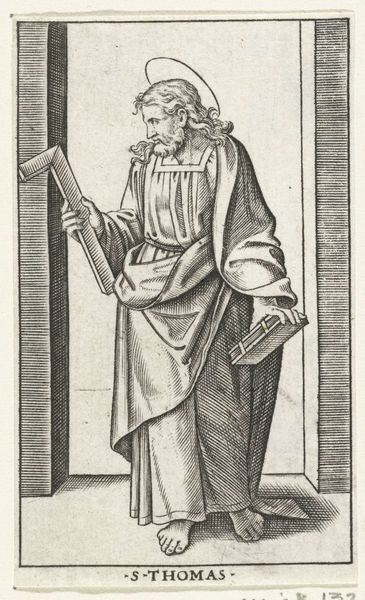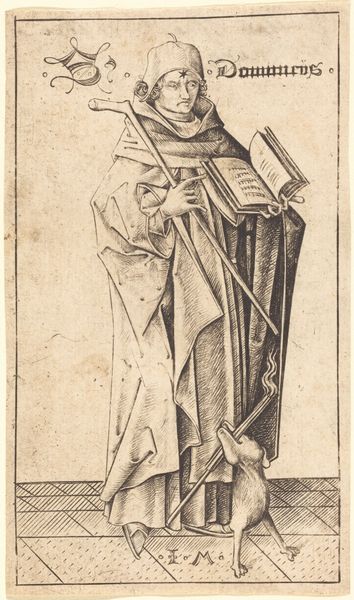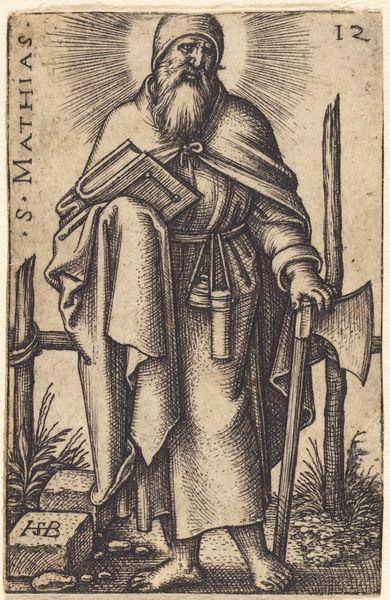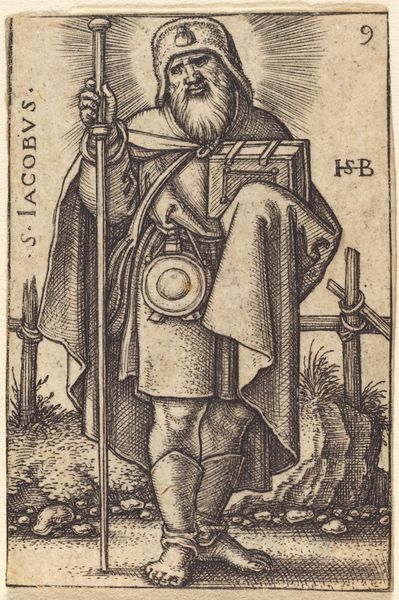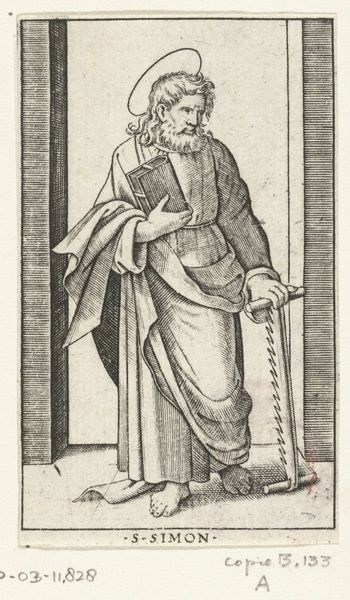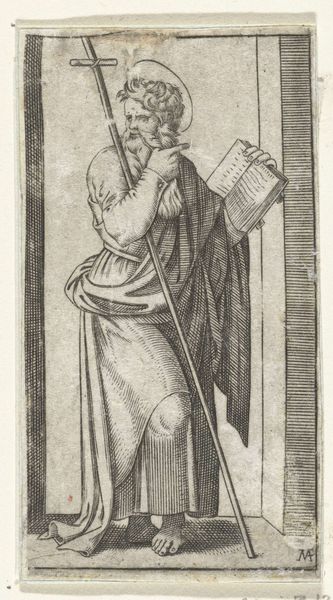
drawing, print, engraving
#
portrait
#
drawing
#
medieval
# print
#
old engraving style
#
figuration
#
line
#
history-painting
#
northern-renaissance
#
engraving
Dimensions: height 46 mm, width 30 mm
Copyright: Rijks Museum: Open Domain
Curator: Sebald Beham's engraving, "Andreas," created around 1545, depicts Saint Andrew. The print comes from the collection of the Rijksmuseum. What's your first impression? Editor: There’s a stark, almost graphic quality to the image that grabs you right away, wouldn’t you agree? The contrasting line work makes it compelling. Curator: Absolutely. Beham was working in a period where printmaking was exploding as a means of disseminating information and ideas. Remember the context: the Reformation, challenges to religious authority... Depictions of saints like this had real political weight. Editor: Notice how the lines create texture on his robes and the cross, rendering depth. But it's not just technical; Beham manages to infuse a surprising level of emotion into what could have been a staid, iconic representation. His humble devotion. Curator: He's clearly styled for the tastes of the rising merchant class in Nuremberg. This image could reinforce their commitment to traditional values in an era of upheaval. His stance, in its piety, is an assertion. Editor: I am seeing an X shape formed by the cross—a powerful focal point anchoring the whole composition. Plus the almost geometric rendition of St. Andrew’s robes – a study in shapes and patterns. Curator: Indeed. While formally it's compelling, one cannot ignore Beham's social position. The "Little Masters" of Nuremberg, like him, faced persecution for their radical, often anti-establishment, views. His choice to depict a saint… Is this personal piety or playing to patronage demands? Editor: That kind of nuance is fascinating. Look again at the direction he looks, immersed in the Bible, we may find that such attention to textual focus, to his personal faith and interiority, makes us experience the image on another, more individual level. Curator: Precisely, and what this engraving encapsulates are those layered historical forces. Beham shows not only skill with his tools but awareness for navigating complex political and artistic waters of his period. Editor: I see now. Considering Beham's historical circumstances, that intense detail really heightens the experience. It certainly makes you look more closely. Curator: It’s that confluence of form, content, and context that truly brings this small print to life. Editor: A detailed dance between faith and craft indeed. I came for the texture, and I stayed for the subtext!
Comments
No comments
Be the first to comment and join the conversation on the ultimate creative platform.
